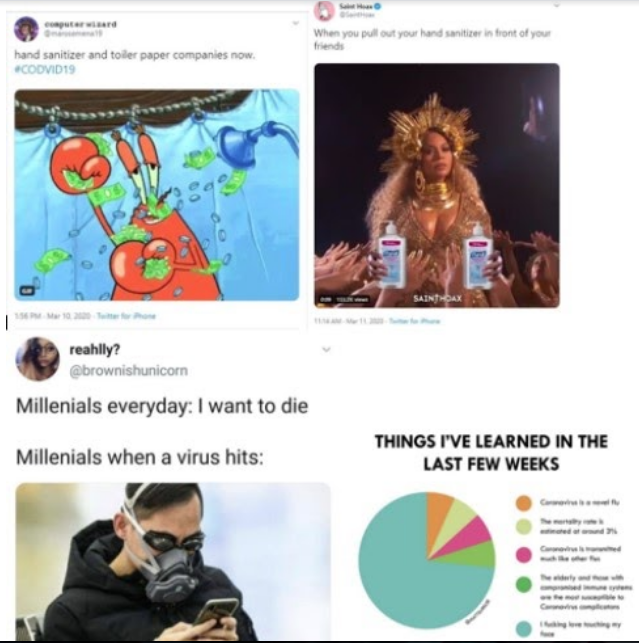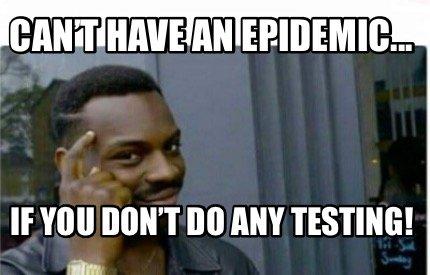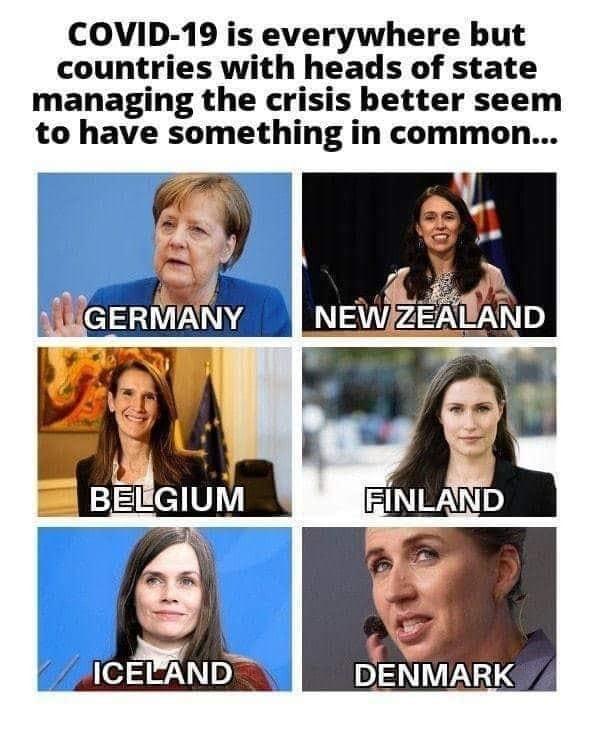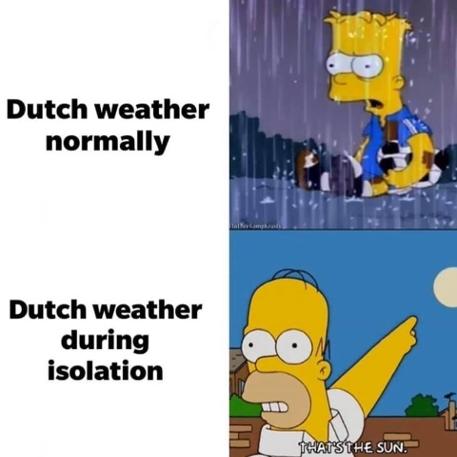
Coronavirus memes: Laughing the apocalypse away
Currently, we are all facing a global crisis. A new coronavirus (SARS-CoV-2), more commonly known as just the coronavirus, emerged in China at the end of 2019, spreading quickly all over the world and causing a pandemic. Many countries are in lockdown, borders are closed, over 4.7 million people have been infected and over 315.000 people have lost their lives to Covid-19. It is a rough time for everyone. People are trying to cope with these events in different ways, and one of those is memes.
Coronavirus memes
In the online world, using humour as a coping mechanism is often expressed through memes. Memes are mostly image macros featuring a witty message or catchphrase. They spread through the internet at a staggering rate, mostly through social media platforms. Memes are often inspired by events and phenomena in the public eye. They can be funny, dark or even serious. Memes draw their power from a combination of timeliness, timelessness and seriality.
These features are especially relevant to crisis memes, which are produced and consumed in the heat of an emergent social crisis. According to Sean Rintel, “Crisis memes are ghoulish and satirical posts that spread to social media concurrently with serious journalistic reportage. They are folk productions that respond to challenging events based on thematic and structural templates of popular online image macros” (Rintel, 2013). Crisis memes could be criticized for being frivolous and ghoulish attention seeking, instead of constituting reasonable discourse. But critique like that misses the point of what we can learned from crisis memes, because they show that people are interested in taking an evaluative public position. They represent a public voice that sidesteps the constraints of traditional media opinion generation and distribution. Crisis memes can be seen as important manifestations of freedom of expression (Rintel, 2013).
Laughter in apocalyptic times
Memes are always reflecting the social reality surrounding us. They become the humorous art of silliness during a serious time, the new model of fighting for your life in our apocalyptic society, keying in on the common threads that many of us have in our lives. Indeed, humour helps people cope with difficult situations in life.
Dixon (1980) argued that humour evolved as a strategy to cope with stress. The realness of a crisis can be dealt with through one's sense of humour, while the anxiety caused by it can be contained through laughter. Victoroff (1969) concluded that joking behaviour during extremely stressful times can serve as a buffer against the harmful aspects of stress. Freud (1960) viewed laughter as a triumph of the ego in the face of adverse circumstances. Thus, humour and laughter are frequently seen as means that people can use to cope with the difficulties of life. You can see this in slogans like “Laughter is the best medicine,” and in such song lyrics as “Let a smile be your umbrella.” People who use humour to make light of their own problems, also easing the burden experienced by others as they may provide others with more humorous and less serious forms of support (Nezlek & Derks, 2001).
Coronavirus-themed memes are providing comic relief and distraction in times of uncertainty.
This almost therapeutic use of humour has also emerged during the spread of the coronavirus. People are turning to the internet for some relief as we are all in need of distraction from the chaos. Coronavirus-themed memes are providing comic relief and distraction in times of uncertainty.
But are these jokes ethical? Dark humour can come across as offensive, harsh and in poor taste, but many jokes are commonly about serious subjects (Hailey, 2020). So, people tell funny jokes about deadly diseases too. But when they do, they are not joking about the disease itself: the joke is a twisted way of coping with the reality of the problem (Padilla, 2020). It is about finding the silver lining, feeling that there is a brighter side to the problem we are facing. It normalizes the situation we're in without really ignoring the concern. The golden rule for creating coronavirus-themed content is that creators have to post accurate information and spread positivity with their work (Valickis, 2020).

Memes reflect on our social reality
Memes are a shared social phenomenon; they are "contagious," widely travelling pieces of cultural information, providing an insight into the preferences and ideas of the people who actively create and use them. Internet users, as both distributors and active creators have authorship over this contemporary globalising means of cultural communication (Laineste & Voolaid 2017). Memes are open to various interpretations. The more interpretations that are accessible for the audience (i.e., the more a meme displays polysemy; Shabtai-Boxman & Shifman 2014), the more popular the meme becomes.

The memes above exemplify what we have discussed so far. While most of us are inconveniencd as a result of social distancing and all the necessary restrictions, there are also some winners as well. This time, it's hand sanitiser and toilet paper companies. If you are one of the lucky people who still have some hand sanitiser, your friends will worship you like Beyoncé. The third meme features darker humour based on the fact that millenials are known for jokingly(?) expressing their deathwish on the internet. Lastly, we have a meme featuring important information with a little twist to it to make it funny and relatable. Wasn’t the biggest discovery for everyone how much we touch our faces without even realizing it?
Memes and digital literacies
Literacy is generally understood as the ability to read and write, but there’s more depth to the concept. It is actually not accurate to speak of illiterate and literate persons as two distinct categories. Literacy is inherently a social phenomenon, and should be seen as a spectrum featuring individuals who are more or less literate than others. An individual can be excellent in reading and writing, but can still fail to understand memes. Making and understanding memes is dependent on one's ability to (mentally) combine and manipulate content, to remix it. Doug Belshaw thinks that remixing is at the heart of digital literacies (Belshaw, 2014).
In order to be able to understand a meme, one needs to be digitally literate in more ways than just being able to read and write.
Millennials and Generation Z people are literate when it comes to memes, while individuals from older generations can have more trouble understanding them. This could be because younger generations tend to spend a lot of time online, which results in them being up to date about the latest trends in internet culture. In fact, being literate is not only an ongoing process, but necessarily a social activity. Literacy is closely aligned with the knowledge and use of tools, it is tool-knowledge. At the same time, it also depends on the content communicated, it is also content-knowledge. Memes are tools that communicate content, and understanding them requires both tool-knowledge and content-knowledge (Belshaw, 2014). Thus, in order to be able to understand a meme, one needs to be digitally literate in more ways than just being able to read and write.
Laughing across borders
With the spread of humourous content across nations and cultures, new interpretations of jokes and memes emerge. There will always be cultural differences in how we tell jokes; the same joke can acquire different meanings in different audiences (or not have meaning at all). Adapting a meme to make different people laugh requires more than translation: the text has to be adjusted to the target culture while staying connected to the original source. English as the language of the internet is also the language of memes most of the time.
Over the past two decades, local adaptations of globalised internet humour are more frequent. Locally-originating memes often use the “draft” template of global memes as a starting point and combine them with local motives and elements. Various translations and remixes are made out of globally understood joke templates (Knobel & Lankshear, 2008), making them more relatable for local audiences. It is a process of glocalisation (Robertson, 1995). Memes are a good example of how local culture mixes various influences into a coherent and meaningful whole (Shifman et al., 2014).
Memes as commentary
“Internet memes have become an important part of community and social life within the contemporary online world, carrying out numerous social roles. They tell the news. They are like a new language commenting on ongoing issues, salient problems, and scandals. Meme users nowadays are active and knowledgeable in everyday issues.” (Börzsei 2013)
In online (youth) culture, if something significant is happening in the world (such as the coronavirus), internet memes sometimes become the first kind of text that people pay attention to in a playfully serious manner. The addressed issues can range from political conflicts to everyday life topics. This provides opportunities for people to process things in a creative and playful social way (Danet et al. 1997), adding to the social capital of those involved (Nissenbaum & Shifman 2015). Memes can be political. They have a supportive function in a discussion by involving people in it. It is more than just criticising or making fun of something.




Conclusion
As we can see, humans use humour as a coping mechanism. Memes are a good example for this. With the outbreak of the Covid-19 pandemic, the people on the internet reacted quickly. Tons of memes have been produced since, covering a great variety in topics, reaching from everyday topics to politics. This phenomenon is global, as is the health crisis. Corona-memes are known worldwide, and many of them have been updated into local versions as well. Everyone can relate to them, and find some relief from the harsh reality humanity is facing these months. Paying close attention can reveal a lot of cultural messages, and in fact, reveal a lot about the social reality that people making or just enjoying the memes experience. One has to be digitally literate to understand them. This new way of communication has many aspects and layers, and constitutes an interesting topic for further research, not just in crisis situations.
References
Danet, B., Wachenhauser, T., Bechar-Israeli, H., Cividalli, A. & Rosenbaum-Tamari, Y. (1995). Curtain time 20:00 GMT: Experiments in virtual theatre on Internet Relay Chat. Journal of Computer Mediated Communication, 1(2). http://onlinelibrary.wiley.com/doi/10.1111/j.1083-6101.1997.tb00195.x/full.
Danet, B., Ruedenberg-Wright, L. & Rosenbaum-Tamari, Y. (1997). “HMMM…WHERE'S THAT SMOKE COMING FROM?” Writing, play and performance on Internet Relay Chat. Journal of Computer-Mediated Communication, 2(4). http://onlinelibrary.wiley.com/doi/10.1111/j.1083-6101.1997.tb00195.x/full.
Belshaw, D. (2014). The Essential Elements of Digital Literacies. Opgehaald van http://digitalliteraci.es
Börzsei, L. (2013). Makes a meme instead: A concise history of internet memes. New Media Magazine: Digital Visual Culture, 7, 152–193. http://www.newmediastudies.nl/publications/ebook_no7.pdf.
Brown, A. (2020, March 21). Laugh Away The Apocalypse With These 15 Coronavirus Memes. Retrieved from Forbes: https://www.forbes.com/sites/abrambrown/2020/03/21/laugh-away-the-apocal...
Dixon, N. (1980). Humor: A cognitive alternative to stress? I. G. Sarason & C. D. Spielberger (Eds) Stress and Anxiety, Vol. 7.
Freud, S. (1960). Jokes and their Relation to the Unconscious.
Harris, M. (2020, March 16). Coronavirus memes are spreading as the disease travels across the world — here's what they look like and why creators say they're important. Retrieved from Insider: https://www.insider.com/coronavirus-memes-people-joking-about-covid-19-t...
Knobel, M. and Lankshear, C. (2008). ‘Remix: The art and craft of endless hybridisation’. Journal of Adolescent & Adult Literacy, 52(1), 22–33.
Laineste, L., & Voolaid, P. (2017). Laughing across borders: Intertextuality of internet memes. European Journal of Humour Research 4, 26-49. https://www.europeanjournalofhumour.org/index.php/ejhr/article/viewFile/...
Nezlek, J. B., & Derks, P. (2001). Use of humor as a coping mechanism, psychological adjustment, and social interaction.
Nissenbaum, A, & Shifman, L. (2015). Internet memes as contested cultural capital: The case of 4chan /b/ board. New Media & Society. http://dx.doi.org/10.1177/1461444815609313.
Rintel, S. (2013). Crisis memes: The importance of templatability to Internet culture and freedom of expression. Australasian Journal of Popular Culture, 2(2).
Shabtai-Boxman, L. & Shifman, L. (2014). Evasive targets: Deciphering polysemy in mediated humour. Journal of Communication, 64(5), 977–998.
Victoroff, D. (1969). New approaches to the psyhology humor. Impacts on Social Sciences, 19.